#itchiku kubota museum
Text


So unbelievably grateful to have seen Itchiku Kubota’s shibori kimonos in person today. The amount of time, labor, skill, and pure passion within his works are absolutely breath taking. As a fibers artist myself I could not help but be brought to tears (possibly multiple times 👀) by the sheer beauty and talent within these pieces. I plan to see them at least once more before I travel back home and possibly never see them again in my lifetime. I aspire to find and show the passion that Kubota had for his shibori kimonos through my own work someday.
12 notes
·
View notes
Text



I would describe today as 'moist.' But still, there's a sense of reassurance in the downpour... That the non-rainy days will feel much better! Visited the Kubota Itchiku museum today; it was very humbling to see such handicraft and dedication to a life long endeavor. We could have seen Mt. Fuji, but the rain decided to come down hard! So I found respite in the many trains we rode today, and also this tiny samurai outfit... is it for a kid? Or a monkey?
2 notes
·
View notes
Text
The Itchiku Kubota Art Museum
I enjoyed the aesthetics of our excursion to this kimono museum more than what I was supposed to learn from the visit. Firstly, arriving and departing in a typhoon was an experience I will never forget. However, something I found to be more impactful was the deeply comforting feeling of looking out on a storm from the safety of inside. Furthermore, the museum was a wonderful place just to exist in. The entrance felt like we were stepping into an entire building carved into the rock, and walking up to the gallery through the garden felt like we were entering a magical artist's shack in the forest.
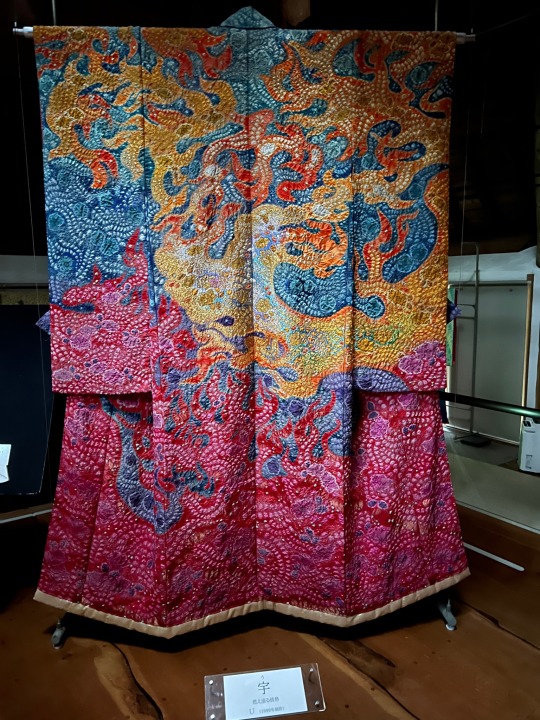


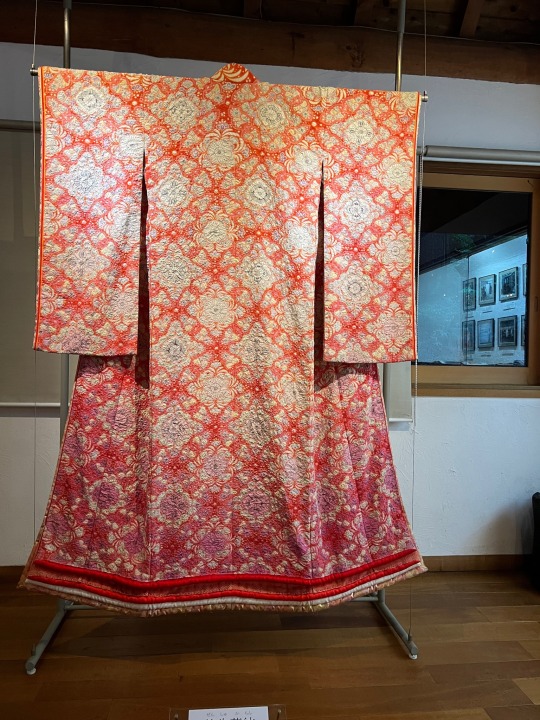
I was on the raised platform when the power went out and it somehow added to the whole experience. I made my way to the restaurant in the back and saw some people from our group drinking matcha and looking out on a garden. The garden was separated by glass and I realized that when the lights were on, all you could see was light from the room reflected in the glass. The blackout allowed everyone to actually see the garden. It made me think about how bad things can be good things in disguise if you look hard enough.




0 notes
Photo
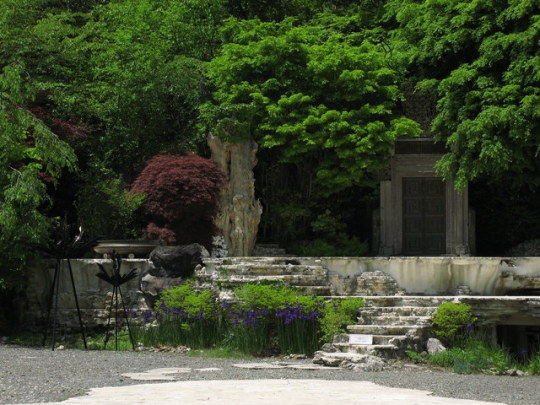
Garden / 庭(にわ) by TANAKA Juuyoh (田中十洋) on Flickr
28 notes
·
View notes
Photo



Dreamy pink hues for this outfit, featuring a lovely wool kimono coat, paired with a dreamy kimono with shidarezakura (weeping cherry blossoms) made using tsujigahana technique.
Tsujigahana is an ancient tie and dye craft which appeared during Muromachi period and was revived by textile artist Kubota Itchiku. If you don’t know about his works, please have a look at his museum’s online collections (Symphony of light is a must see <3):
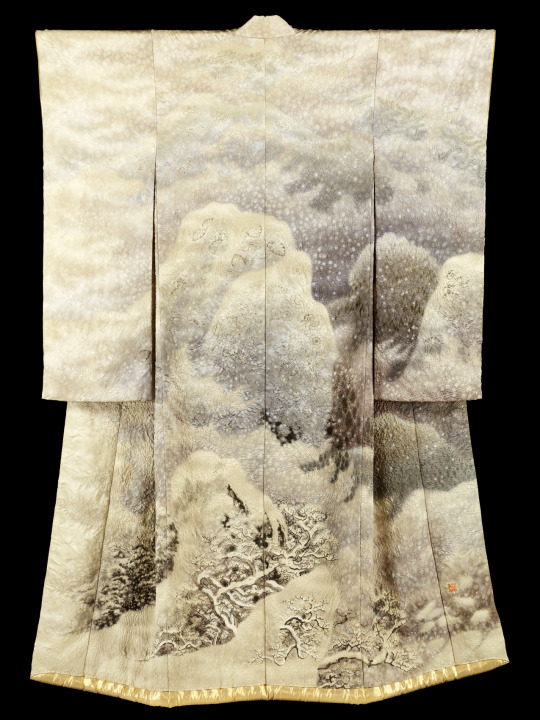
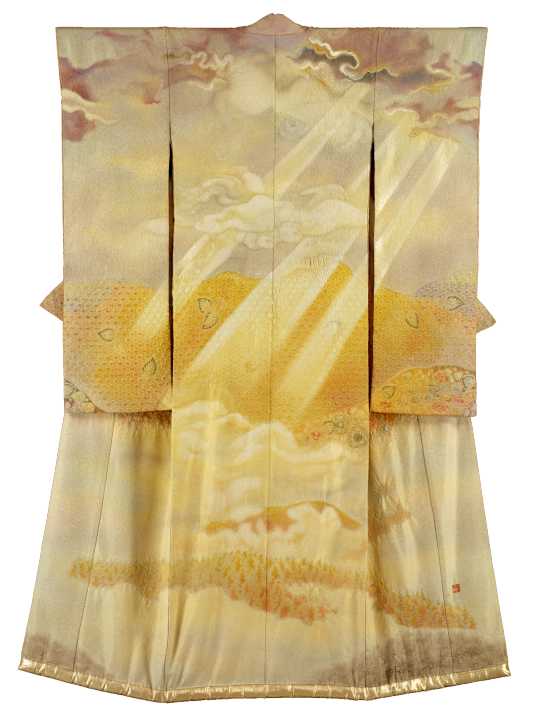
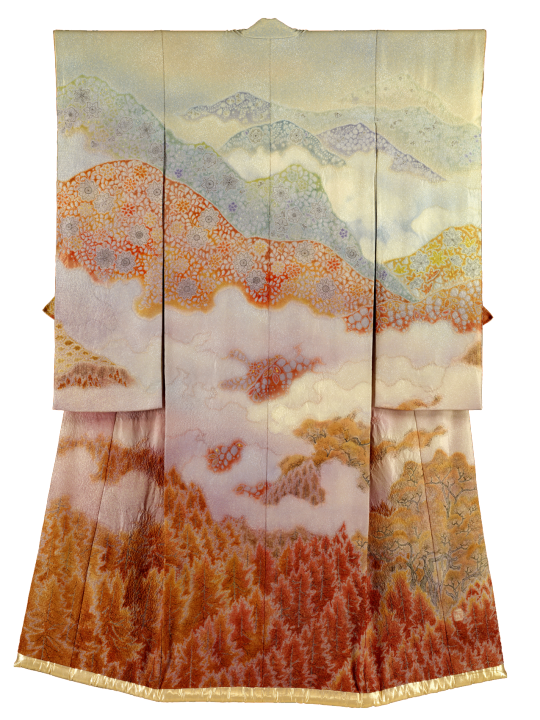
#japan#fashion#kimono#obi#coat#sakura#shidarezakura#weeping cherry blossom#cherry blossom#tsujigahana#Muromachi#Kubota Itchiku#Itchiku Kubota#textile art#着物#帯
290 notes
·
View notes
Text
Japan: Spring 2019 (part 2)
Japan: Spring 2019 (part 2)
2019 Adventures: Family vacation during spring in Japan
Itchiku Kubota Art Museum
Fuji Shibazakura Matsuri
Nagoya Castle & Hommaru Palace
A5 Wagyu dinner

View On WordPress
2 notes
·
View notes
Photo

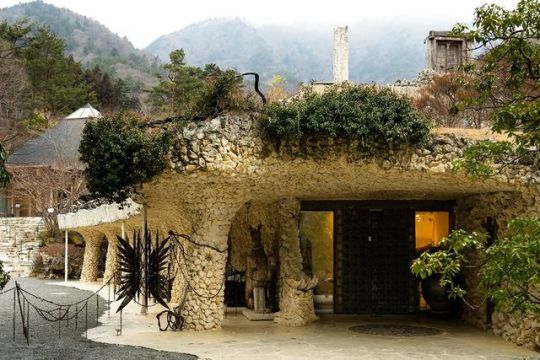
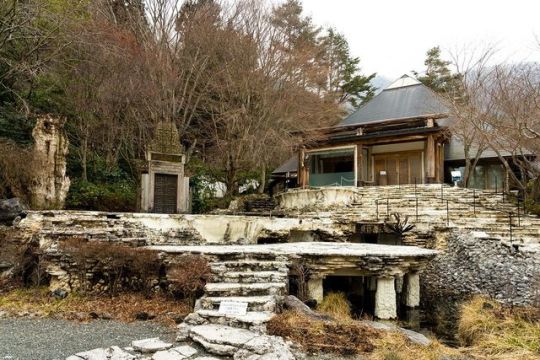

Itchiku Kubota Art Museum in Yamanashi Prefecture. The unique facility sets in woods near Lake Kawaguchi at the base of Mount Fuji.
https://www.nippon.com/en/guide-to-japan/gu900092/masterpieces-at-the-foot-of-the-mountain-kubota-itchiku%E2%80%99s-kimono-art-in-yamanashi-prefec.html
10 notes
·
View notes
Text
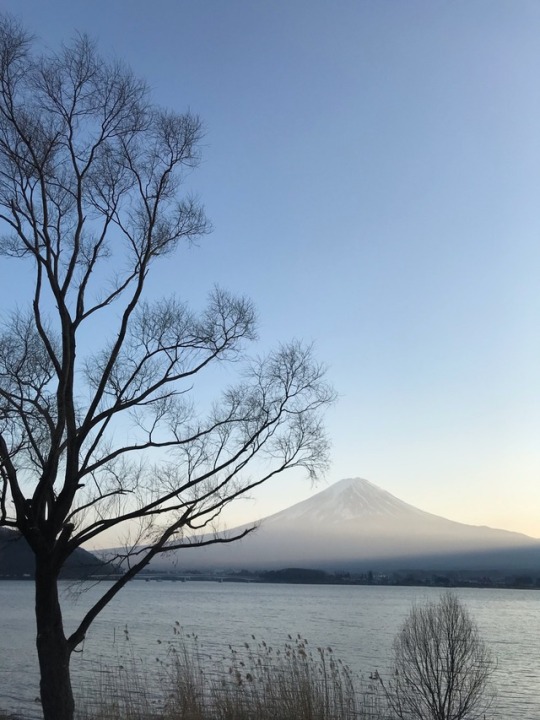





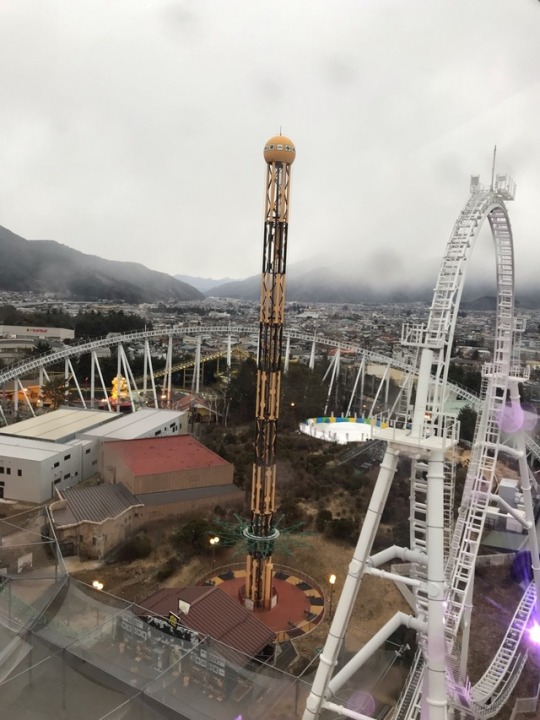

Mt Fuji
富士山
Yamanashi Prefecture: We went out to visit the Kubota Itchiku Museum the first day, which was spectacular. Kubota Itchiku was a kimono maker who recreated a Heian Era sting techinque and made the most astonishing art, kabuki, and noh kimono. I saw part of his life-work of seasonal kimono on tour this summer and seeing his other work at the Museum was amazing. We could have stared at them for hours, the way the texture and the colours and everything looked. The museum was one he designed himself, on hill overlooking Lake Kawaguchi and Mt Fuji. It’s made from local volcanic rock in a kind of avant-garde Mediterranean style with extensive Japanese gardens going up and down the hill. Mt Fuji was also gloriously visible that afternoon so we walked back along the lakeshore taking dramatic sunset pictures every few feet.
Yesterday we went to Fuji-Q Highland, an amusement park in the shadow of Mt Fuji. K and I, both fond of roller coasters, rode all four big coasters in the morning — they were awesome! I had never been on most of them before and had a great time. We then joined D in the afternoon to play on the smaller rides. For lunch we tried ほうとう (houtou), a local Yamanashi soup dish with fat noodles cooked at your table like a personal hot pot. K and D got the pumpkin kind which it traditional; I tried it with mushrooms, which was amazing.
4 notes
·
View notes
Photo



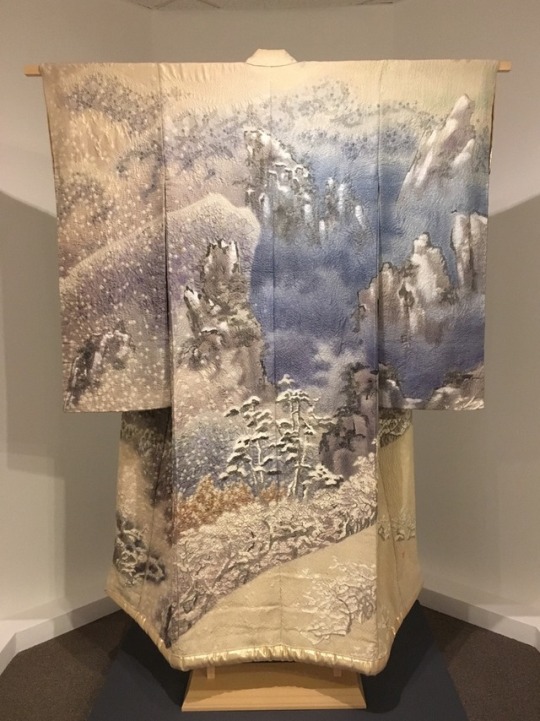
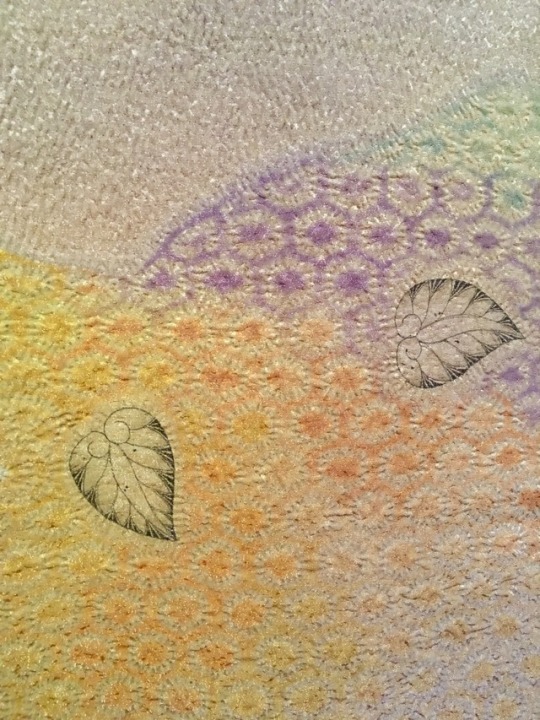
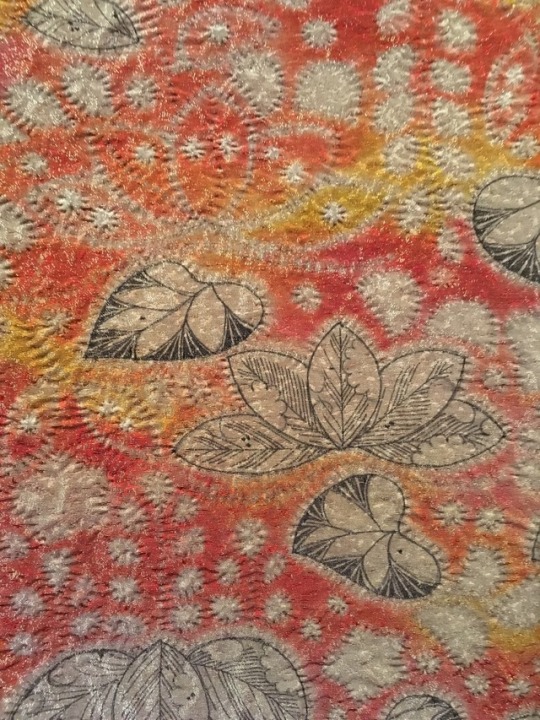

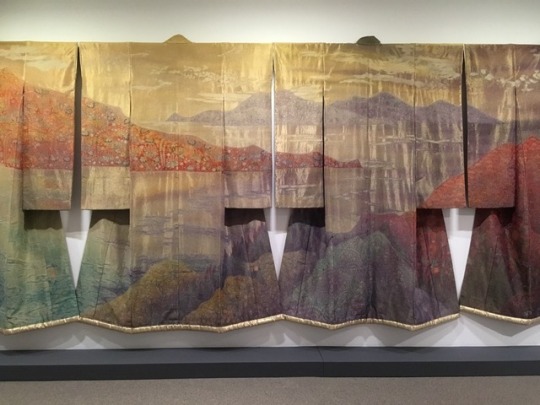
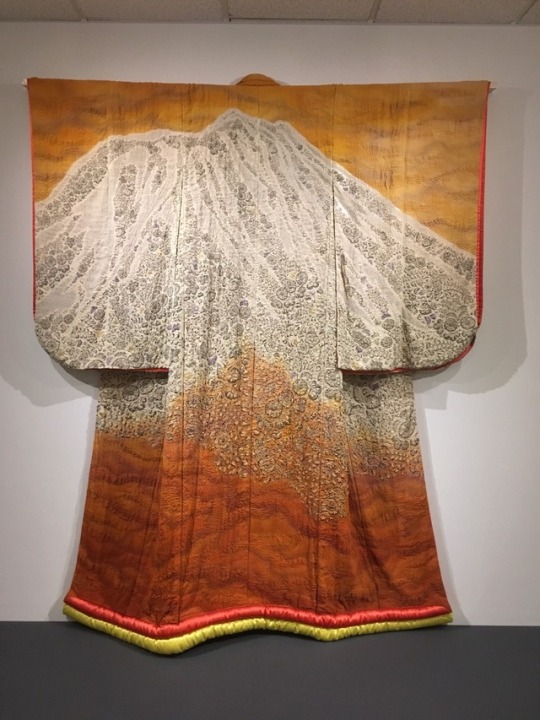
Artistry in Silk: The Kimono of Itchiku Kubota Textile Museum of Canada, Toronto February, 2018 (By Patricia F. Almeida)
182 notes
·
View notes
Photo
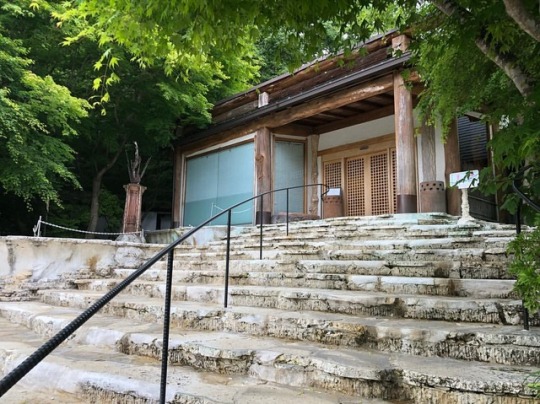
一番綺麗な美術館 俺の場合です。 #noedit #iPhone #photo #japan #bijutsukan #travel #mtfuji #🗻 (在 Itchiku Kubota Art Museum)
1 note
·
View note
Text
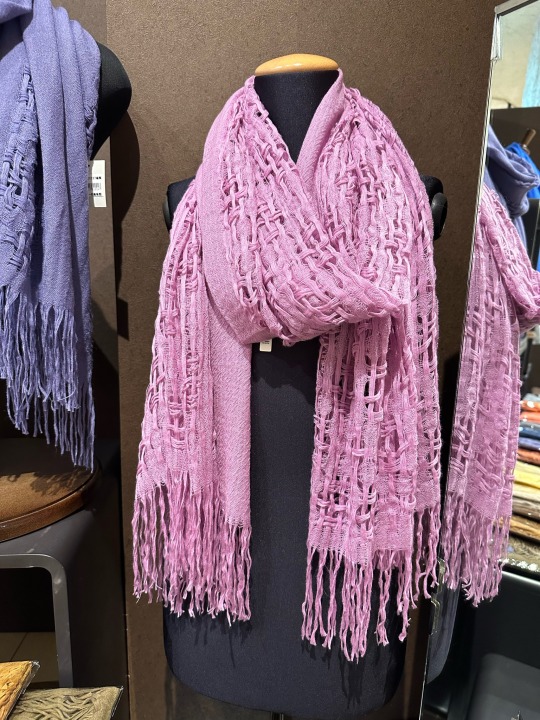



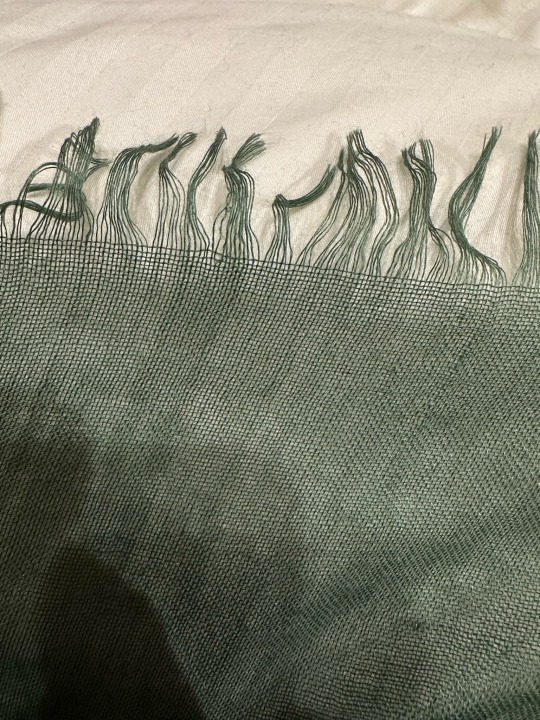
More from the Itchiku Kubota Museum gift shop are these expertly woven scarves from Koma, made entirely from silk and chiffon. I just had to grab one from the brand for myself so I can admire the beauty within the fine weave when I return home.
4 notes
·
View notes
Photo

Japan is a bewildering, beautiful country that is like nowhere else. There are so many amazing things to do in Japan that one trip is never enough—it has stolen our hearts and we can’t stop returning.
From ancient temples to futuristic skyscrapers, tranquil tea ceremonies to over-the-top arcades, relaxing hot springs to cosplay go-kart rides, Japan has so much to offer everyone.
In this post I share the best things to do in Japan divided into the categories Culture (for unique things you can only do in Japan), Fun (for all the quirky and futuristic stuff), Food (because the food is extraordinary and you must eat as much as possible), Spiritual (for all those wonderful temples and shrines) and Beautiful (for the gorgeous natural scenery).
Even on a short visit to Japan, you can choose a few experiences from each category for an unforgettable trip.
Cultural Things to Do in Japan
These unique things to do in Japan are activities you don’t find elsewhere and are the best ways of experiencing Japanese culture.
1) Spend a Night in a Ryokan
Our room at Hotel Mushashiya ryokan overlooking Lake Ashi in Hakone
For at least one night of your trip, I highly recommend staying in a ryokan, which is a traditional Japanese inn. Tatami mat rooms are elegant, minimalist spaces, usually with just a table and low chairs where you can enjoy green tea on arrival. Breakfast and dinner are often included in the price and served in your room.
The epic, multi-course meals are a highlight of a stay in a ryokan and have been some of our best meals in Japan. Ryokans can often cater to vegetarians and vegans, but let them know any dietary requirements in advance (you don’t get a choice of dishes).
After dinner, futons will be set up on the floor and can be surprisingly comfortable to sleep on.
Ryokans range from simple (such as guesthouses called minshuku) to ultra-luxurious, sometimes with private baths and views overlooking exquisite Japanese gardens. They are more expensive than regular hotels but are well worth it for the experience.
We loved our stay at Hotel Musashiya in Hakone (a top spot for seeing Mount Fuji) where our room and the public Japanese bath overlooked Lake Ashi. It’s reasonably priced, friendly, and the food was wonderful.
You can find many other ryokans all over Japan—search on Booking.com.
2) Soak in an Onsen
The classic Japanese experience is soaking in the steaming hot waters of an onsen (hot spring bath)—it’s a must for your Japan bucket list. Onsens come in many forms—indoor and outdoor, simple and luxurious, small and large. Most of them are shared, but some ryokans have private baths you can reserve.
Onsens can be a challenge for foreigners (they were for us at first!), as you must be completely naked (most are divided by gender). Make sure you shower thoroughly before you get in the bath too. It’s worth getting over your fears as they are such a relaxing experience.
3) Wander Around an Onsen Town in a Kimono
In winter kimonos at Kinosaki Onsen
If you want the full onsen experience, head to an onsen town. These small resort towns are usually in rural settings and feature many different onsens. They are popular destinations for the Japanese for relaxing getaways.
The best way to experience one is to stay in a ryokan. Some have their own onsens and usually include a pass to visit the other onsens in town. After putting on the provided yukata (cotton kimono) and geta (wooden sandals), you head out to hop from one onsen to another and relax in the steaming waters.
There are many onsen towns in Japan. We loved Kinosaki Onsen, which is easily accessible from Kyoto and Osaka and is particularly pretty in the spring when the canals are lined with cherry blossoms.
We stayed at the friendly Morizuya Ryokan which has two small onsens available for private use in the afternoon—perfect for your first time.
Read more about Kinosaki Onsen and onsen etiquette.
4) Watch a Geisha Dance
Geishas are one of the most fascinating aspects of Japan, especially if you’ve read Arthur Golden’s popular novel Memoirs of a Geisha about these highly-skilled women who entertain using traditional arts.
It’s hard to believe they still exist, but when we spent a month living on a traditional street in Miyagawacho in Kyoto (near the more well-known Gion area), we often saw them in brightly coloured kimonos emerging from wooden teahouses.
Rather than stalking geisha on the streets of Gion, I recommend watching them perform at one of the annual dances that take place every spring and autumn. The most famous is the Miyako Odori in April, but we went to the Kyo Odori instead, which doesn’t attract many foreign guests.
The performance was spectacular, and it was fascinating to get a closer look at the extravagant kimono, ornate hairstyles, and iconic white makeup these graceful women wear.
Top tip: Miyagawacho is the perfect area to stay in Kyoto for spotting geisha without the crowds of Gion. We rented a studio on VRBO that’s no longer available, but this three-bedroom townhouse was above us. Other options in this area are this traditional machiya with outdoor bath and a stylish machiya formerly owned by a geiko.
5) Admire Ukiyo-e Prints
Ukiyo-e or Japanese woodblock prints are uniquely Japanese and flourished during the Edo Period from the 17th to 19th centuries. The prints depict landscapes, regular life of ordinary people, and popular kabuki actors, sumo wrestlers, and geisha from the world of entertainment or “floating world”.
You can see ukiyo-e in many cities in Japan. We enjoyed the small Ota Memorial Museum in Harajuku, Tokyo which displays rotating exhibitions—we were lucky enough to see the 36 Views of Mount Fuji by Hokusai including the famous Great Wave off Kanagawa.
6) See Sumo Wrestlers in Action
Sumo is serious in Japan and the national sport is steeped in tradition. Matches still include rituals that date back to its ancient origins as part of the Shinto religion such as purifying the ring with salt.
You can see sumo wrestling at one of the sumo tournaments that happen a few times a year (book tickets in advance on Voyagin) or take a tour to a sumo stable in Tokyo or Osaka to see the wrestlers’ morning training session. Tournaments happen in Tokyo in January, May and September and Osaka in March.
I loved the novel The Street of a Thousand Blossoms by Gail Tsukiyama, which gave me a greater insight into sumo culture.
7) Watch a Kabuki Performance
Kabuki is a form of traditional Japanese theatre that dates back to the Edo Period. It includes drama, dance and music and the all-male performers wear elaborate makeup.
The best place to see a Kabuki performance is the Kabukiza Theatre in Ginza, Tokyo (English captions are available), but you might find performances in other major cities.
9) Dress Up as a Geisha
Hiring a kimono for the day and wandering the historic streets of Gion and Higashiyama is a popular activity in Kyoto with both Japanese and foreigners. There are many shops in Gion and the surrounding areas to rent them (the Yasaka Shrine area is a convenient place to start).
Although Kyoto’s ancient streets are the most common place to rent a kimono, you can find rental shops throughout Japan.
10) Gaze at Itchiku Kubota’s Stunning Kimonos
On a cloudy day at Kawaguchiko (when Mt Fuji did not emerge), we came across the Itchiku Kubota Art Museum on the shores of the lake. We didn’t expect much from a kimono museum, but Itchiku Kubota’s oversize kimonos are exquisite works of art and we were blown away.
Kubota made it his life’s mission to recreate a lost textile dyeing technique from the 16th century and the results are stunning. His kimonos are full of colour and texture and depict nature such as the changes in Mount Fuji through the seasons.
This museum isn’t on many things to do in Japan lists, but I think it’s a hidden gem, especially if you visit the beautiful onsite teahouse too.
11) Pay Your Respects at the Hiroshima Peace Museum
Head to Hiroshima to pay your respects to the victims of the atomic bombing at Hiroshima’s moving Peace Memorial Park. The park is beautiful and the museum is heartbreaking, riveting, and vitally important. Afterwards, explore the modern city that was almost entirely rebuilt after World War II.
Recommended Reading: 10 Unmissable Places to Visit in Japan
Fun Things to Do in Japan
12) Ride a Shinkansen (Bullet Train)
We adore train travel in Japan. The network is extensive and the trains are comfortable, clean, quiet, safe, and always on time (to the minute!).
Best of all are the shinkansen or bullet trains which travel at ultra-high speeds of up to 320 km/h (199 mph). They make travelling between major cities very fast—Tokyo to Kyoto, a distance of 450km (280 miles) can be covered in 2 hours 15 minutes by the fastest shinkansen Nozomi.
You can even ride fun themed bullet trains such as the Hello Kitty shinkansen which runs from Osaka to Fukuoka.
Shinkansen are expensive, but a Japan Rail Pass makes them more affordable as you can hop on as many as you’d like without a reservation.
Recommended Reading: Is a Japan Rail Pass Worth it?
13) Go-Kart Around Tokyo
Simon dressed up as Yoshi while go-karting in Tokyo
Go-karting is our pick for the most fun thing to do in Japan! Where else in the world can you dress up as your favourite character and drive go-karts on the real streets of a major city?
We went go-karting in Tokyo, but you can also do it in Osaka and Kyoto. I was terrified at first as we drove alongside buses and cars but ended up having so much fun! You used to be able to dress up as Mario characters but Nintendo shut that down.
Make sure you get an international driving permit from your home country before you come to Japan as they are strict about this requirement.
14) Enjoy a Day at DisneySea
DisneySea is one of the best Disney parks in the world with a unique nautical theme featuring ports like Mysterious Island with an erupting volcano and Mediterranean Harbor which looks just like Italy.
There are many fun rides at DisneySea as well as more adult-orientated attractions like seeing a Broadway show or drinking a cocktail in a 1920s lounge aboard a cruise liner.
Disney is easily accessible from central Tokyo in about 30 minutes, but on our third visit we stayed a short walk away at the inexpensive Hotel Mystays Maihama and loved avoiding rush hour travel and being able to take a break during the day.
I definitely recommend staying nearby if you want to visit the neighbouring Disneyland Tokyo park as well as you’ll need two full days.
15) Head up High for a City View
View from Harukas 300 in Osaka at night
Japanese cities are vast and impressive with towering skyscrapers and neon signs. I think they are best admired from above at night, so head up to an observatory in one of the tall buildings.
My favourite observatory is Harukas 300 in Osaka which has 360º views from the floor to ceiling windows and a cool open-air garden bar.
In Tokyo you can get a free view from the Tokyo Metropolitan Government Building in Shinjuku or enjoy VR rides along with the city skyline at the Sky Circus Sunshine 60 Observation Deck in Ikebukuro. Tokyo Tower is another popular viewpoint and looks like a red Eiffel Tower.
16) Rent a Karaoke Booth
Karaoke is one of the most typical Japan activities—everyone from teenagers to businessmen loves it here.
But don’t worry if you are shy—there’s no need to sing in public as in Japan you rent a private booth in one of the many huge karaoke buildings. The rooms are equipped with comfy seating, microphones, TV, and a tablet which you use to choose from a wide selection of songs. You can even order drinks and food.
We went to a branch of the budget Karaoke no Tetsujin chain in Tokyo and were surprised that the cost included a drink—it makes an affordable night out.
17) Be Spirited Away at the Studio Ghibli Museum
If you are a fan of Studio Ghibli films like Spirited Away and My Neighbor Totoro, don’t miss this whimsical museum in Tokyo where you can see props and drawings from the animations in a quirky building.
You must buy your tickets at least a month in advance—see the Ghibli website for details. If you miss out, Voyagin has more expensive last-minute tickets.
Recommended Reading: 17 Cool Things to Do in Tokyo
18) Enter the World of Harry Potter at Universal Studios Japan
Harry Potter World at Universal Studios Japan
Universal Studios Japan in Osaka is a must for Harry Potter and theme park fans.
The highlight is the immersive Wizarding World of Harry Potter where you can wander the snowy cobbled streets, stroll through Hogwarts, drink butterbeer, shop for sweets in Honeydukes, and even cast your own spells if you buy a magic wand.
Elsewhere in the park, there are plenty of rides for thrill-seekers including Hollywood Dream and The Flying Dinosaur—the scariest rollercoaster I’ve ever been on!
See our favourite Universal Studios Japan rides.
The park gets extremely busy, so avoid weekends and buy your tickets in advance. Consider purchasing an Express Pass to skip the queues.
19) Experience Sensory Overload at the Robot Restaurant
The Robot Restaurant is one of the weirdest things to do in Japan. It’s not actually a restaurant but is a bizarre, high-energy show featuring robots, dragons, ninjas, blue-haired dancers, creepy clowns, guitarists on swings, drummers, and lots of flashing neon lights. It’s incredibly loud, obnoxious, and hilarious.
Don’t pay full price on the door for the Robot Restaurant—buy discounted tickets in advance from Voyagin.
20) Ride the Don Quixote Ferris Wheel in Dotonburi
Don Quixote Ferris wheel in Dotonburi, Osaka
A nighttime visit to Osaka’s Dotonbori neighbourhood is a must-do in Japan with its overwhelming display of neon, giant food models, and many restaurants and food stalls.
Overlooking the river you can ride a unique Ferris wheel in the building of the massive Don Quixote store (great for cheap souvenirs). It’s the strangest looking Ferris wheel as it’s built onto the facade of the store and you ride in a capsule that follows an oval shape up to 77 metres high with views of the river and city.
Top tip: We recommend this spacious Airbnb apartment in the Shinsaibashi neighbourhood of Osaka. It’s walkable to Dotonburi but is in a much quieter area with some great shops and restaurants nearby.
21) Play Taiko Drums in an Arcade
There are so many video game arcades in Japan that you won’t be able to miss them (they are loud and neon!). There’s a wide array of games, and one of the most fun is playing the huge Japanese taiko drums.
The most unique arcade we visited in Japan was the Anato No Warehouse in Kawasaki near Tokyo, which is themed like a seedy back alley in Hong Kong’s Kowloon walled city.
If you want to play real Taiko drums, you can take a class in Tokyo.
22) Get Lost in the Colourful TeamLab Borderless Museum
TeamLab Borderless is a unique digital art museum in Tokyo. It’s an immersive experience where you walk around in the dark (there’s no map) and interact with a series of colourful exhibitions of light and sound displays.
It’s like no museum I’ve ever been to and is worth braving the crowds for. Make sure you book tickets in advance as it usually sells out, and arrive just before opening.
23) Brave the Shibuya Crossing
One of the most famous sights in Tokyo is the insane Shibuya Crossing, the world’s busiest pedestrian crossing. Outside Shibuya Station as many as 2500 people cross the road every time the light changes, somehow managing to avoid bumping into each other.
You can head into the crowd yourself or view the action from above in one of the neighbouring buildings (Starbucks is the most popular spot). It looks best at night when all the neon signs are lit up.
Best Japan Activities for Foodies
Food in Japan is an adventure and an art form. Japanese cuisine is universally delicious and beautifully presented whether you pick up a snack from a 7-Eleven (yes, this is the only country I recommend this) or indulge in multi-course fine dining.
Being a vegetarian can be a challenge if you don’t plan in advance, but follow our vegetarian in Japan tips and you’ll eat some of the best meals of your life.
We love eating in Japan and there are many fun and tasty culinary experiences to enjoy.
24) Order Ramen from a Vending Machine
Ramen, or noodle soup, may have its origins in China, but there’s now a no more classic Japanese food experience than enjoying a steaming bowl of ramen. Not only is it utterly delicious, but it’s also one of the quickest and cheapest meals you can find.
In the simplest ramen joints, you make your selection and pay at a vending machine at the entrance and then hand over your ticket to the chef behind the counter who will cook the soup of your choice.
Most ramen is made with meat (or occasionally fish) broth and topped with pork, but vegetarian ramen is becoming more common. Read our vegetarian Tokyo guide for our favourite veggie ramen joints and look out for the chains Kyushu Jangara Ramen and Chabuton.
25) Make Your Own Takoyaki
Iduco Self Tacoyaki bar in Osaka
Takoyaki is a street food from Osaka that consists of batter cooked in ball shapes on an iron plate and stuffed with octopus. It’s not something vegetarians can usually eat, so we were ecstatic to find a tiny takoyaki stand in Osaka that not only does a vegetarian version but also lets you make your own.
The owner of Self Tacoyaki Bar Iduco is a friendly guy, and it was fun making our messy takoyaki and filling them with green onion, pickled ginger, mushroom, konnyaku, puffed rice, and dried seaweed.
26) Try Okonomiyaki
Okonomiyaki is another classic Japanese dish found all over the country but especially in Osaka and Hiroshima. It’s a thick savoury pancake made with a batter of flour and eggs and filled with cabbage and whatever else you want. Hiroshima-style okonomiyaki also contains noodles.
In some okonomiyaki restaurants, you make your own, while in others it’s made on an iron griddle in front of you. It’s a hearty and inexpensive meal.
27) Take a Cooking Class
A cooking class is one of the best things to do in Japan for foodies as you can learn more about Japanese food culture and take home recipes for your favourite dishes.
There’s a wide variety of cooking classes available in Japan where you can learn to make okonomiyaki, sushi, tempura or regional dishes. On our next trip I want to take this vegan ramen making class near Osaka.
We loved our class with Emi at Uzuki Cooking Class who teaches home-style Japanese cooking in her kitchen in Kyoto. We made a series of beautiful vegetarian dishes using local ingredients.
28) Indulge in a Kaiseki Meal
One of the 12 courses of our vegan feast at Bon in Tokyo
If ramen is one of the cheapest Japanese meals, kaiseki is the most expensive. Kaiseki is a traditional multi-course meal of the highest quality. A series of small, exquisitely presented dishes are served to guests, usually in beautiful tatami mat rooms. Ingredients are always in season and the presentation enhances the seasonal theme.
Kaiseki meals can be very expensive, but they are a unique experience. Lunch is more affordable than dinner.
If you are vegetarian, look out for the meat-free alternative shojin ryori instead—our favourite place for this is Bon in Tokyo.
29) Drink Matcha with Wagashi
Matcha is a powdered green tea that has a richer flavour than regular tea. A classic Japanese activity is enjoying a bowl of matcha in a traditional tea house accompanied by wagashi, beautiful sweets typically made from rice, red beans, and sugar.
There are many tea houses in Kyoto—we had a great experience at Ippodo Tea Shop. We also loved the view from the tea house at Itchiku Kubota Art Museum in Kawaguchiko.
30) Learn the Art of the Tea Ceremony
Tea ceremony at Gyokusen-en gardens in Kanazawa
Tea isn’t just a drink in Japan and I highly recommend experiencing a traditional tea ceremony to learn more about this important part of Japanese culture.
Kyoto is the home of the tea ceremony, so there are many options such as this authentic tea ceremony near the Golden Temple or this tea ceremony in a traditional townhouse. In Tokyo you can do a tea ceremony at the Bonsai Museum. Some have the option of wearing a kimono which adds to the atmosphere.
We did a tea ceremony at the gorgeous Gyokusen-en Gardens in Kanazawa, which is harder to book than the suggestions above. Ms Nishida, who is from the fifth generation of the family who owns the gardens, took us through the ritual and we learnt the appropriate phrases, how to appreciate the tea bowl, and the concept of “ichi-go ichi-e” which means cherishing the moment as it will never happen again.
Recommended Reading: Our 2 week Japan itinerary includes Kanazawa.
31) Drink Sake at an Izakaya
From the tranquility of a tea room to the boisterousness of an izakaya, Japan is all about contrast. An izakaya is a Japanese pub where you can drink sake (rice wine), beer and other alcoholic drinks accompanied by small tapas-like plates of food.
If you don’t feel brave enough to venture into an izakaya yourself, you can take a tour in Tokyo or Osaka.
32) Eat Sushi
Our vegetarian sushi feast in our room at Morizuya Ryokan in Kinosaki Onsen
Sushi is Japan’s most famous dish so, of course, you’ll want to try it in its homeland. Eating sushi in Japan is different from elsewhere and there are strict rules—see this sushi in Japan guide for tips.
Sushi comes in many forms. While it all involves rice prepared with sushi vinegar, it doesn’t all include raw fish. Vegetarian sushi made with tofu, cucumber, or other vegetables is harder to find, but you can read our vegetarian Japan guide for ideas.
You can eat sushi everywhere from convenience stores to fine dining restaurants. The most famous (and exceedingly expensive) restaurant is Sukiyabashi Jiro in Tokyo—you can learn more about the revered chef in the documentary Jiro Dreams of Sushi (also available on Netflix).
It’s a difficult restaurant to get a reservation for, and you can’t just call yourself, but Voyagin can make a reservation for you. A more affordable option is Sukiyabashi Jiro Roppongi, which is run by his son.
Another popular place to try sushi is the Toyosu Fish Market—you can take a private tour or visit yourself (but you’ll need to apply in advance to see the early morning tuna auction).
33) Enjoy a Bento Box on a Train
A bento box is a Japanese lunchbox featuring a range of small dishes with a balance of flavours, textures, and food groups. You can find them in train stations (where they are called ekiben and use local ingredients), convenience stores, and department store food halls.
This being Japan, they are works of art and very tasty. They are ideal for long train rides and picnics in the park.
A typical bento features rice, meat or fish, and pickled vegetables. Vegetarian bentos are not easy to find, but we did get one at Matsumoto in the Isetan department store near Shinjuku Station in Tokyo.
34) Hanami Under the Cherry Blossoms
Locals enjoying hanami at Himeji Castle
Hanami is a Japanese custom of viewing the transient sakura (cherry blossoms) that bloom for a few weeks in spring (usually late March to mid-April in Tokyo and Kyoto).
The most popular way to enjoy the blossoms is with a picnic under the trees. The Japanese gather in large groups with food and drinks for parties that often last all day and into the night.
To enjoy your own hanami, you can pick up a bento box from a department store or there are many picnic options in convenience stores as well as beers and sake. Look out for sakura-themed items like mochi, kitkats, and even beer.
Our favourite hanami spots were Handayama Botanical Garden in Okayama and Shinjuku Gyoen National Garden in Tokyo where we enjoyed three picnics in a week under the late-blooming cherry trees.
Top Tip: Airbnbs are an affordable option in Tokyo and Shinjuku is our favourite area to stay. We recommend this affordable Airbnb studio that’s a short walk from Shinjuku Gyoen.
35) Order Hot Coffee or Soup from a Vending Machine
In Japan you’ll find vending machines everywhere—in train stations, on almost every street corner, and even on hiking paths. They are very convenient as you’ll never go thirsty.
Most vending machines sell drinks—cold green tea, milk tea, soft drinks, energy drinks, juice (some with jelly chunks), and water. It’s not just cold drinks, though—in the colder months you can buy a can of hot coffee, tea, and even corn soup to go! You can tell they are hot as they’ll have a red label (rather than blue for cold drinks). You can also find vending machines that sell alcohol.
It may not be the best coffee in the world, but Simon loved the convenience of being able to pick up a can of hot coffee anywhere, especially on cold mornings when we had a train to catch. His favourite was Tully’s—he found the more common Boss coffee (randomly advertised by Tommy Lee Jones) rather gross.
Spiritual Things to Do in Japan
Visiting a Buddhist temple or Shinto shrine is a must do in Japan even if you aren’t religious (we’re not). They are diverse, beautiful, peaceful (sometimes), and fascinating with many rituals to observe. They are often set amongst lovely natural settings in forests or on mountainsides.
The best places to visit temples and shrines are Kyoto (Japan’s capital for 1000 years until 1868) and Nikko (a UNESCO World Heritage Site a few hours north of Tokyo), but you can find them all over the country even in modern Tokyo and Osaka.
Read our Kyoto temples guide for more on the differences between temples and shrines.
36) Stay in a Temple at Koya-San
One of the most unusual things to do in Japan is spend the night in a temple in the sacred mountain town Koya-san, about 90 minutes from Osaka.
Many temples offer shukubo or temple lodging where you can sleep in tatami mat rooms, soak in communal onsen baths, and enjoy delicious shojin ryori vegetarian Buddhist meals. Early in the morning you can join the monks for their chanting and fire ceremony.
We stayed in the cheapest temple accommodation, Haryo-in, but it’s quite basic and not available to book online. Next time I’d pay more for one of the more traditional temples like 1000-year-old Eko-in.
37) Hike Through Torii Gates at Fushimi Inari
My favourite shrine in Japan and one of the most popular things to do in Kyoto is the unique Fushimi Inari. Thousands of bright orange torii gates snake up through a forest on the side of a mountain and it takes about 90 minutes to complete the full circuit (which I recommend as it’s much quieter at the top).
Fushimi Inari is one of the top tourist attractions in Japan and gets incredibly busy, so I highly recommend arriving before 7 am or after 8 pm to avoid the worst of the crowds.
Although I prefer it early in the morning, hiking it at night feels more adventurous with a slightly spooky atmosphere (watch out for wild boars!). The shrine is free and open 24 hours.
38) Visit the Golden Temple
Another Kyoto highlight is Kinkaku-ji or the Golden Temple. We expected it to be overrated (and it is very crowded), but the shimmering gold pavilion reflected in a pond amongst leafy gardens lived up to the hype.
39) Get Your Fortune Told at a Temple or Shrine
Omikuji are fortune-telling paper strips that can be bought at Japanese temples and shrines. The fortunes range from great good luck to great bad luck (luckily the worst we’ve got is “pretty good”). Some of the more popular temples like the Golden Temple in Kyoto have fortunes in English.
If you get a bad fortune, make sure you leave it at the temple to avert the bad luck—there are dedicated areas to tie them. If it’s a good fortune you should carry it with you.
40) Meditate at a Zen Garden
Zen Buddhist temples usually feature kare-sansui or dry landscape gardens made from rocks and gravel carefully raked into patterns that suggest rippling water. They are simple, elegant, and the perfect place to meditate.
Kyoto is the best place to find Zen temples. Ryoan-ji Temple is the most famous (and crowded), and we enjoyed the gardens at Kennin-ji and Kodai-ji (especially when the cherry tree is in bloom). At Entoku-in we had the chance to create our own miniature garden.
41) Visit a Temple at Night
Night illuminations at Kiyomizu-dera in Kyoto
In the spring cherry blossom and autumn leaf seasons some temples open at night. They are beautifully illuminated, sometimes feature special light shows, and it feels like a different experience visiting in the dark. We especially enjoyed night visits to Kiyomizu-dera and Kodai-ji in Kyoto.
42) See the Giant Buddha at Nara
Nara is a wonderful day trip from Kyoto. It was Japan’s first permanent capital and is full of historic treasures including many UNESCO world heritage sites.
The highlight is the immense Daibutsu-den (Hall of the Great Buddha) at Todaiji. It’s the largest wooden building in the world and houses the 15-metre tall gold and bronze statue of Buddha that dates back to 751.
43) Explore the Temples at Nikko
Temple fans shouldn’t miss Nikko, a mountain town full of UNESCO World Heritage temples a few hours north of Tokyo. Many people visit on a day trip, but it’s worth staying overnight to get an early start and avoid the crowds.
Toshogu Shrine is the main attraction and features more than a dozen lavishly decorated red and gold buildings amongst huge, ancient cedar trees. I also recommend playing games at atmospheric Futarasan-jinja and hiking up the mountain to the tranquil Takino shrine.
44) Get Off the Beaten Track at Otagi Nenbutsuji
Otagi Nenbutsuji
My favourite temple in Kyoto is the quirky Otagi Nenbutsuji in the lovely Arashiyama neighbourhood. It’s much quieter than other temples in the area, and the shady temple complex features 1200 stone sculptures of the Buddha’s disciples all with different facial expressions and poses from scary to serene.
Best Beautiful Japan Attractions
There’s so much more to Japan than the cities. You’ll find many gorgeous mountains, lakes, islands, waterfalls, rivers, rice fields, and forests. Temples and shrines are also often in beautiful natural settings, so see the section above as well.
Here are just some of the top things to do in Japan in nature. There are many other options to experience Japan on foot, bike, boat, and skis.
45) Attempt to See Mount Fuji
Mount Fuji just after sunrise at Lake Kawaguchi
For many people the iconic Mount Fuji is a top Japan sightseeing spot. The perfectly shaped volcano is Japan’s highest mountain at 3776 metres, and it’s especially lovely in the winter and spring when it is snow-capped.
The best towns to see Mount Fuji from are the hot spring resort Hakone or the Fuji Five Lakes area (especially the lakeside town Kawaguchiko)—we’ve enjoyed visits to both. Mount Fuji is elusive, though, and is often obscured by cloud. It’s best to allow a few days in the area to increase your chances of seeing the peak.
You can also climb Mount Fuji but only in July and August and it’s a challenging climb.
In Kawaguchiko we stayed at Kawaguchiko Lakeside Hotel, which is close to the lake and has Mount Fuji views. It’s not fancy, but it’s reasonably priced for the area, and our room (with separate living room) was our largest in Japan.
46) Loop Around Hakone
While Hakone is a great place to see Mount Fuji, it also has a lot to offer when the mountain is hiding behind clouds. With the Hakone Freepass you get unlimited rides on transport in the area and can follow a fun loop which includes a pirate ship cruise across Lake Ashi, ropeway (cable car) up a mountain to Owakudani, an active volcanic valley, and a train through the mountains.
We loved staying at the modern ryokan Hotel Musashiya on the shores of Lake Ashi in Moto Hakone where we had fantastic views of the lake from our room and the onsen. It’s close to Hakone-jinja shrine where a large red torii gate overlooks the lake.
47) Go Cherry Blossom Viewing
Cherry blossoms by the canal in Kinosaki Onsen
Japan in spring lives up to the hype. The fleeting sakura (cherry blossoms) are truly spectacular, and they are everywhere, not just limited to a certain park or canal. It’s a joyous time of year when locals hit the parks for hanami picnics and eat cherry-blossom themed food.
Kyoto and Tokyo are excellent famous cherry blossom spots, but we also enjoyed Okayama where it wasn’t as crowded. Early April is usually the peak sakura season, but it is never guaranteed.
48) Cycle the Countryside
A fantastic way to experience rural Japan is by bike. We really enjoyed a group cycling tour with Satoyama Experience from the adorable town of Hida-Furukawa near Takayama. We learnt about local traditions and cycled past rice fields, rivers, mountains, and idyllic villages.
We also did a DIY half day trip along the Kibi Plain Bike Path past beautiful off-the-beaten-path temples, rice fields, and cherry blossoms. From Okayama take the train to Bizen-Ichinomiya where you can hire a bike one-way to Soja then hop on the train back from there.
49) Walk Through a Bamboo Forest (But Not in Arashiyama)
Bamboo forest at Kodai-ji temple on a rainy night
There’s something magical and very Japanese about a bamboo forest with its towering green stalks swaying in the breeze. By far the most popular bamboo forest in Japan is in Arashiyama in Kyoto, which is considered one of the top things to see in Japan.
Honestly, it’s so crowded that I much prefer the smaller bamboo groves that you find in temples such as Kodai-ji. I encourage you to seek out a more peaceful bamboo forest for yourself.
50) Visit the Art Island of Naoshima
The famous yellow pumpkin on Naoshima island
Naoshima is a rural island in the Seto Inland Sea that has been transformed into a hub of contemporary art. We visited as a day trip from Okayama and hired e-bikes to cycle the island (it’s not very big).
As well as enjoying beautiful coastal views we saw Yayoi Kusama’s famous yellow and red pumpkins and visited several art museums and the unique Art House Project with installations spread over abandoned houses.
51) Stroll a Japanese Garden
You can’t visit Japan and not take a stroll through a traditional garden. There are many styles of Japanese gardens and they all highlight the beauty of nature and avoid artificial components where possible.
Classic elements include moss-covered rocks, carp-filled ponds, stone lanterns, wooden teahouses, maple trees, and cherry blossoms. Many are found at temples.
There are so many to choose from, but some of my favourites are the tiny but exquisite Gyokusen-en Gardens in Kanazawa, Shinjuku Gyoen in Tokyo, and the grounds of Jojakko-ji Temple in Arashiyama, Kyoto.
52) Hike the Historic Nakasendo Trail
The Nakasendo Trail connected Tokyo and Kyoto during the Edo period. Along the journey through the mountains there were many “post towns” where lords and samurai could stop to rest at traditional inns and soak in hot springs.
You can still do a half-day hike on the most scenic part of the trail from Tsumago to Magome (5 miles/ 3 hours). A typhoon prevented us from doing the walk, but we still enjoyed our stay in the picture-perfect traditional Japanese village of Tsumago, which is well-preserved with many wooden buildings.
53) See Traditional Thatched Houses at Hida Folk Village
Traditional grass roof houses at the Hida Folk Village
We thought the Hida Folk Village near Takayama would be too touristy, but the open-air museum is a beautiful place, especially in the autumn. It features traditional thatched houses from across the Hida region that were moved to the museum in 1971. It was fascinating to see what life was like for rural Japanese in the Edo period.
Another option if you have more time is to stay in one of the Gassho-style thatched houses in the village of Shirakawa-go (50 minutes by bus from Takayama).
54) Walk from Kibune to Kurama
A worthwhile half-day trip from Kyoto is to take a 30-minute train ride to the village of Kibune in the Kitayama Mountains. From there you can walk through the forest over the mountain to Kurama-dera, a temple with fantastic views.
Continue to the village of Kurama where you can have a tasty vegetarian lunch at Yoshuji or soak in an onsen before hopping on the train back to Kyoto. Or in the summer you can hike it in the opposite direction and finish with a meal on a platform over the river in Kibune.
It’s an easy, peaceful, and beautiful escape from the city.
Planning Your Japan Itinerary
See our post on the best places to visit in Japan for our top recommendations.
Kyoto and Tokyo are the most popular destinations for first-time visitors and are a good combination for seeing the traditional and modern sides of the country.
I also recommend spending at least one night (more if you have time) in more rural locations such as Hakone (for Mount Fuji), Takayama (for traditional wooden houses), Nikko (for temples), or Koya-san (for an overnight temple stay).
Here’s our recommended Japan 2 week itinerary.
Japan Travel Tips
See our other Japan blog posts for more tips:
Planning a Trip to Japan: Dos and Don’ts
17 Cool Things to Do in Tokyo
Is a Japan Rail Pass Worth it?
Where to Stay in Japan: A Guide to Accommodation Options
15 Fascinating Books to Read Before Visiting Japan
Vegetarian Survival Guide to Japan
I hope this post has given you plenty of ideas for what to do in Japan. Enjoy exploring this weird and wonderful country!
0 notes
Note
Inbox me (1) thing you want to know about me. Favorite work of art featured in a museum gallery. (Or one you know is in a museum)
Seeing a touring exhibition of Itchiku Kubota's kimonos (www.thekubotacollection.com/en) sent me into a spiral of motivation and frustration. There is so much ground I need to cover to be satisfied with my artistic output---but feeling what those pieces did to my brain, I knew I can't simply write off art as not for me. The colors and textures, the sweep of composition, the intricate detail that's organic and almost never fussy, that's IT. I don't care what media I figure out how to do that in, I want results that sing like that.
1 note
·
View note
Text
Articulated Timelessness
Articulated Timelessness
By Tom Wachunas
EXHIBIT: AVATARS – Relics from the Future / art by Gary Spinosa, at the Canton Museum of Art / 1001 Market Avenue North, Canton, Ohio / THROUGH JULY 23, 2017 / 330-453-7666 /
https://www.cantonart.org/exhibits/current
DOWNLOAD additional HIGH RESOLUTION IMAGES VIA THIS LINK:
http://bit.ly/2nBSboV
“When I think of art I think of beauty. Beauty is the mystery of life. It is not in the eye, it is in the mind. In our minds there is awareness of perfection.” - Agnes Martin
“The most beautiful experience we can have is the mysterious. It is the fundamental emotion that stands at the cradle of true art and true science. ― Albert Einstein
With its voluptuous and spectacular materiality, craftsmanship of the highest order, and deeply spiritual iconography, Gary Spinosa’s AVATARS is a truly astonishing experience. Among the many marvelous exhibits I’ve seen at the Canton Museum of Art during the past 25 years, I haven’t encountered such a profoundly inspired and breathtaking aesthetic vision from one man since Itchiku Kubota’s Kimono As Art exhibit in 2009.
Breathtaking? Breath-giving might be more to the point. Spinosa hints as much when he writes, “The most important quality in a work of art does not come from the idea alone, but from the innate communicating power contained and emitted through the object itself. Being charged with emotion, there can exist within an object a radiating energy. This reflects man’s sacred capacity to merge spirit into matter and make seemingly intangible tangible…” Operative terms here: “sacred capacity” and “radiating energy.”
Our word ‘avatar’ is from the Sanskrit avatāra, from ava, ‘down,’ and tarati, ‘he goes down’ or ‘he passes beyond.’ The term originally described the Hindu concept of a god’s appearance on earth in the form of a human or animal, i.e., an embodiment, or incarnation. Our most ancient art was at its core a response to living in a world at once awesome in its sensual fecundity, terrifying and baffling in its dangerous natural forces. Utilizing our ‘sacred capacity’ to imagine and create, we made commemorative things from the primal stuff of the earth - stone, clay, wood, metal - transforming these raw materials provided by nature into images, temples, totems, utilitarian vessels, and statues. Through the ‘radiating energy’ of these materials - the magic, if you will – we sought to remember our avatars, our spirit guides, as declaring their presence, perhaps even dwelling in our midst, and always commanding our attentions.
It is abundantly evident in the sculptures we see here, made over the course of more than 50 years, that Gary Spinosa has been inexorably drawn to let those same primal materials continue speaking, emanating many of the same essences that inspired the ancients. You could call him a modern-day shaman, baptizing clay with fire, recalling those seasons and places in human history when an artist was held as a conjurer of both mysteries and truths.
That said, Spinosa is neither an idol maker nor a builder of temples and tombs for dead kings. His eloquent renderings of humans, animals, and otherworldly combinations thereof, aren’t enthronements of implacable pagan deities demanding our abject worship, blood sacrifices, or burned offerings. They aren’t threatening sentinels so much as they seem on the verge of imparting wisdom. And even at their most austere or solemn, their visages exude a welcoming spirit in an air of contemplative, benevolent quietude.
So yes, there is intrigue and mystique here. And in equal measure there is an instantaneous familiarity about Spinosa’s works – a kinship to, or illustrative suggestion of archaeology from various cultures throughout history, yet without being directly representational of any specific societies, religions, or belief systems. In all of their beautifully detailed execution and their tactile monumentality, these objects are far more than simply hybridized reminders of ancient structures, rituals, or artifacts. Think of them collectively as the transcendent archaeology of the human soul. Stories live here. Spinosa’s and ours. In symbolically sourcing civilizations from across time and planet, this astoundingly prolific artist has – in extraordinary mythopoetic fashion - articulated the eternal narrative of…us. It is indeed the story of our ceaseless endeavors to pursue and apprehend the source and reason for our existence.
I recently read a passage in G.K. Chesterton’s Orthodoxy which I think is particularly resonant with appreciating the high caliber of art shown here, and more importantly, why the making and viewing of great art such as this is a necessary and proper response to being alive. Chesterton was assessing the spiritual state of his world at the dawn of the 20th century when he wrote, “…We are all under the same mental calamity; we have all forgotten our names. We have all forgotten what we really are. All that we call common sense and rationality and practicality and positivism only means that, for certain dead levels of our life, we forget that we have forgotten. All that we call spirit and art and ecstasy only means that for one awful instant, we remember that we forget.”
In the end, after investing sufficient time – an adequate duration of ‘awful instants’ - to examine Spinosa’s wondrous creations, you may well find an unexpected portal to possibility, or a connective relic, as it were, of something heretofore undiscovered or forgotten. An entryway to epiphany. Think of this art as an invitation to embrace why and what you are in the continuum of humanity.
In that sense alone this exhibit is, in its entirety… an avatar.
PHOTOS, from top: Tower; Wall Shrine; Tockolosh; Life Force of the Fields; Container of Knowledge II; Divine Transport
Articulated Timelessness syndicated post
2 notes
·
View notes
Text
Itchiku Kubota Art Museum, located near Kawaguchi-ko Lake in Yamanashi, is an off-the-beaten-path architecture. Kubota was an textile artist who revived the old silk dyeing. And this museum was dedicated to exhibit his craftwork. The silk he dyed is of course beautiful but what I like most is the architecture itself. Because it is very unique – it has an exotic atmosphere.
Gates
There are several unique parts of the architecture in this museum. One them is gates. With some reason, there are many gates this property. Since they are not Japanese traditional-style doors, they give an equisotic atmosphere.
Gate of Itchiku Kubota Art Museum near Kawaguchiko Lake in Yamanashi.
Greens
The architecture of Itchiku Kubota Art Museum consists of three parts; the exhibition of the textile, the main building of the exhibition and the garden. Therefore, the garden also has an exotic atmosphere. So it does not look like a traditional Japanese garden. Yet, it also has a taste of Japan as you can see in the bamboo woods.
Stone Pillars
There are several thick stone pillars just outside of the main building. Supporting the stone walls and ceilings, these pillars form parts of the stone corridors.
When I looked at these pillars, immediately they reminded me of a park in Spain.
Pillars in Park Guell in Barcelona.
This is a famous park of Antonio Gaudi. I suspect that the architect of Itchiku Kubota Art Museum was inspired by Gaudi. And this must be the reason this architecture is quite exotic.
More Information on Itchiku Kubota Art Museum
Address: 2255 Kawaguchi, Fuji Kawaguchiko Machi, Minami Tsuru Gun, Yamanashi
Opening hrs: December – March 10am – 4:30pm,
April – November 9:30am – 5:30pm
Closed on Tuesdays and 26-29 Decemter
Admission: ¥1,300 for adults, ¥900 for college students and senior high school children, ¥400 for junior high school and elementary school children.
Access: 10 min by taxi or 20 min by community bus (Omni Bus Red Line) from Kawaguchi-ko Station of Fuji Kyuko Line. The nearest bus stop is “Kubota Itchiku Bijutsukan. Buses start every 15 minutes.
URL: https://www.japan-guide.com/e/e6912.html
Visiting Unique Architecture of Itchiku Kubota Art Museum. #japantravel #explorejapan #architecture #kawaguchiko #yamanashi #japanesegarden #garden Itchiku Kubota Art Museum, located near Kawaguchi-ko Lake in Yamanashi, is an off-the-beaten-path architecture. Kubota was an textile artist who revived the old silk dyeing.
0 notes
